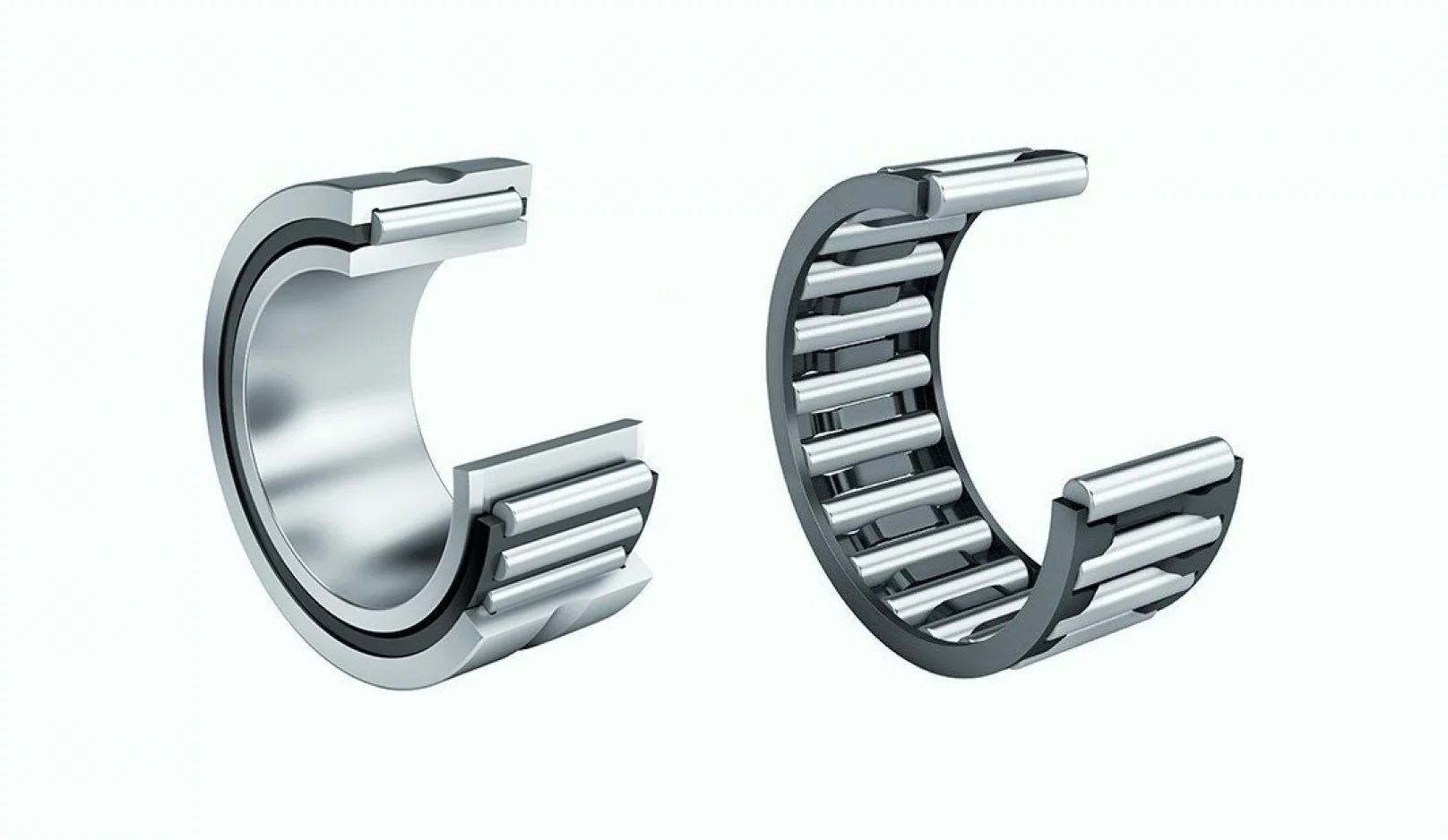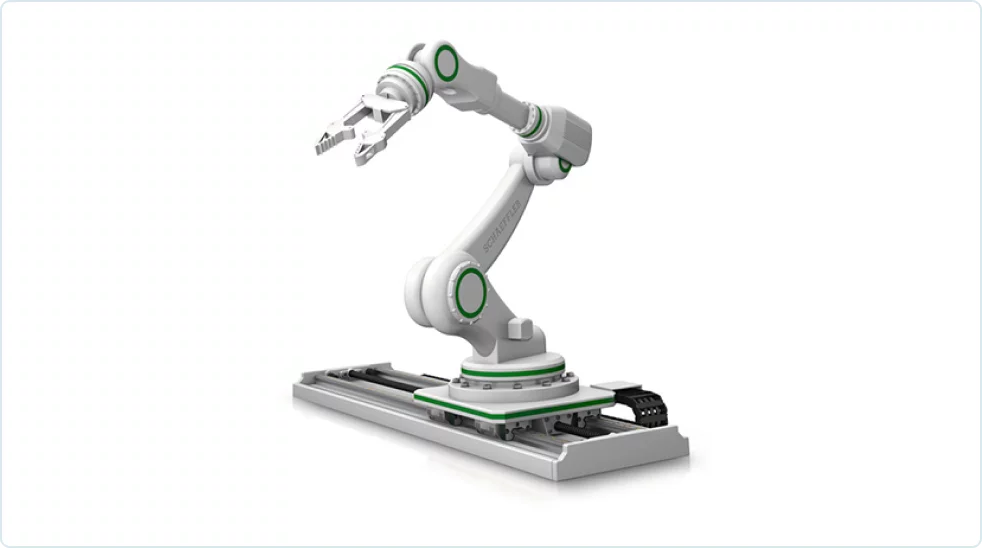
MinebeaMitsumi Bearing Types Explained
Pacific International Bearing Sales (PIB) is a leading distributor of precision bearing solutions. In demanding applications from factory automation to humanoid robots, these bearings ensure smooth, accurate motion and long service life. This guide introduces the key MinebeaMitsumi bearing types available through PIB, explaining each bearing’s construction, advantages, and typical uses in robotics and high-precision equipment.
Miniature Ball Bearings (Deep Groove Ball Bearings)
Miniature deep groove ball bearings are the cornerstone of precision mechanisms. These single-row radial ball bearings have a simple yet robust construction: an inner ring and outer ring separated by precision balls held in a cage (retainer). Despite their tiny size (often only a few millimeters in diameter), miniature bearings deliver remarkable performance in high-tech applications.
- Ultra-Small Sizes: MinebeaMitsumi manufactures miniature bearings with bore diameters as small as ~1–3 mm and outer diameters under 22 mm. This ultra-compact size allows engineers to design compact robotic joints, grippers, and micro-actuators without sacrificing durability.
- High Precision & Low Friction: The balls and raceways are ground to sub-micron tolerances, resulting in smooth rotation with minimal friction. Low friction means high efficiency and responsive movement in servo motors and robotic limbs. These bearings also run quietly – essential for medical robots or laboratory instruments.
- High-Speed Capability: Miniature ball bearings can achieve very high rotational speeds (often 50,000+ RPM in the smallest sizes). They use carefully selected lubricants and optional polymer cages to reduce heat and noise at high RPM. Robotic motors and spindles benefit from bearings that maintain accuracy even at rapid speeds.
- Material Options: Standard miniature bearings use high-carbon chrome steel for maximum hardness and longevity. Stainless steel versions (e.g. SUS440C) are available for corrosion resistance in humid or cleanroom environments. For extremely demanding needs, PIB can also supply hybrid designs (steel rings with ceramic balls) that further reduce friction and permit higher speeds.
- Common Applications: Miniature deep groove bearings are found in humanoid robot finger joints, small robotic gearheads, encoder assemblies, and any precision device where space is at a premium. For example, in a humanoid robot hand, dozens of tiny NMB bearings enable each finger’s joints to move smoothly and reliably.
Radial Deep Groove Ball Bearings (Standard Small Bearings)
Radial deep groove ball bearings are the most widely used bearing type, prized for their versatility. “Radial” indicates they primarily support loads perpendicular to the shaft (radial loads), though deep groove bearings can handle some axial (thrust) load as well. MinebeaMitsumi produces a broad range of these bearings, from instrument sizes up through small industrial sizes, all with precision characteristics ideal for robotics and machinery.
- Versatile Load Support: Deep groove radial bearings have a raceway geometry that can support radial loads (from rotating shafts or wheels) and moderate axial loads in both directions. This makes them a go-to solution for robot arm joints and drive systems, which often experience combined forces during movement.
- Standard and Flanged Designs: MinebeaMitsumi offers both standard open bearings and those with integrated flanges or snap rings to simplify mounting. Flanged bearings have a lip on the outer ring that helps position the bearing in housings – useful in robot assemblies where alignment is critical. These variants save engineers assembly time and ensure secure fits in motor housings and gearboxes.
- Sealed and Shielded Options: To suit different environments, radial bearings come in open (unsealed), shielded, or sealed configurations. Shielded bearings (metal shields) block dust and contaminants while running with low drag – great for high-speed motors or conveyor rollers. Sealed bearings (rubber seals) offer even better protection, keeping grease in and dirt out, ideal for industrial robotic arms exposed to dust or for cleanroom robots where bearing lubricant must be contained.
- Low Friction, Long Life: Thanks to quality materials and finely finished surfaces, these bearings exhibit low running friction and stable performance over time. MinebeaMitsumi’s deep groove bearings are tested for long fatigue life and low noise. This reliability is crucial in automation equipment – for instance, a CNC machine’s precision spindle or a robotic assembly line gripper can cycle millions of times on these bearings without failure.
Common Applications: You’ll find radial deep groove NMB bearings in robot drive wheels, arm swivels, linear slides, small pumps, and precision gearheads. Whether it’s supporting the rotation of a robotic elbow joint or the shaft of a high-speed drone motor, these all-purpose bearings provide smooth rotation and alignment.
Thrust Ball Bearings
Thrust ball bearings are designed specifically to carry axial loads (forces along the axis of the shaft). Unlike deep groove bearings, thrust bearings do not support radial loads – their role is to stabilize components axially. MinebeaMitsumi’s thrust ball bearings are typically small, high-precision units consisting of two grooved washers with balls between them. They are often used in combination with radial bearings to handle axial forces in a mechanism.
- Axial Load Specialist: A thrust ball bearing supports forces pushing or pulling along a shaft, such as the weight of a vertical axis or the end load on a screw. In a robotics context, consider a robotic arm’s shoulder joint: radial bearings handle the arm’s rotation, while a thrust bearing can support the arm’s weight (axial load) to prevent shifting. These bearings keep components from drifting under load, ensuring positional accuracy.
- Construction: MinebeaMitsumi thrust bearings come in two styles – with raceway grooves (where the balls run in machined grooves on the washers for higher precision) and without raceways (flat washers for certain low-profile designs). The standard material is stainless steel for corrosion resistance and cleanliness. Despite being thin, the washers are hardened to provide a durable raceway for the balls.
- Low Friction and Smooth Rotation: Thrust bearings use hardened steel balls and polished race disks to minimize friction under axial load. This is important in applications like robotic turntables or swiveling sensor mounts, where the bearing must allow easy rotation while holding a component in place vertically. MinebeaMitsumi’s quality control ensures these thrust bearings won’t snag or stick even under consistent pressure.
- Typical Uses: You’ll find thrust ball bearings in precision gearboxes, vertical lead screw supports, rotary tables, and robot joints that need additional axial stability. For example, in a precision positioning table (like those used in semiconductor equipment or camera gimbals), a thrust bearing may support the table’s weight, allowing it to rotate or tilt smoothly without wobble. In many cases, one or two small thrust bearings are paired with radial bearings to create a robust support in cobot arms and automated inspection machines.
Plastic and Composite Bearings (Integrated Plastic Components)
MinebeaMitsumi also provides innovative composite bearing assemblies that combine metal bearings with plastic elements. Often, these take the form of bearings integrated into plastic housings or components, achieving a lightweight and specialized part for unique applications. While not “plastic bearings” in the sense of all-plastic raceways, these assemblies leverage high-performance resins to add functionality around a precision bearing.
- Integrated Designs: A prime example is the pulley bearing – a miniature ball bearing molded into a plastic pulley or gear. The bearing’s outer ring is fused with a plastic wheel that might drive a belt or tape. This integration ensures perfect concentricity and saves space. Robotics and ATMs use such pulley bearings for timing belts, feeders, or cable drives. By distributing loads through the plastic structure and the steel bearing, the assembly runs quietly and efficiently.
- Lightweight, Non-Magnetic Options: By using engineered plastics (like polyamide or polyacetal) for outer components or cages, these bearings significantly reduce weight and eliminate magnetic materials in critical areas. For instance, a medical robot or MRI-compatible device might require non-magnetic bearings – plastic/ceramic hybrids fulfill this need. Also, reducing the weight in moving parts (e.g., a robot arm’s end effector) can improve dynamic performance and reduce motor loads.
- Low Noise and Vibration: Plastic components naturally dampen vibrations. Bearings with plastic cages (retainers) or housings run with less noise, which is beneficial in quiet lab automation equipment or service robots. MinebeaMitsumi often uses plastic retainers in miniature bearings to enable higher RPM with lower noise, as the plastic material generates less friction against the rolling balls.
- Corrosion-Resistant Assemblies: In corrosive or wet environments (food processing robots, chemical lab equipment), plastic housings combined with stainless steel bearings offer excellent durability. The plastic shields the bearing from direct exposure to liquids, and stainless steel resists rust – a combination that extends life in harsh settings.
- Custom Solutions: PIB can facilitate custom composite bearing designs, drawing on MinebeaMitsumi’s expertise. Examples include tape guide assemblies (a bearing combined with a polymer guide for guiding films or cables in automation systems) and plastic linkages with embedded pivot bearings. These ready-to-use units simplify the construction of complex robotic mechanisms by delivering a drop-in part that meets precise tolerances.
Pivot Bearings and Specialty Bearing Assemblies
MinebeaMitsumi’s capabilities go beyond standard catalog bearings – they also produce precision bearing assemblies like pivot bearings that are critical in high-accuracy motion control. A pivot bearing assembly typically consists of a pair of ultra-precise ball bearings mounted on a common shaft and sleeve, creating a unit that allows rotation with virtually zero play. Originally developed for hard disk drive actuators, these pivot assemblies provide stable, low-torque pivoting in a compact package.

- Zero Backlash Pivoting: Pivot bearing assemblies are engineered for extremely smooth rotation without looseness. The dual-bearing arrangement, preloaded against each other, eliminates backlash. In robotics, this concept can be applied wherever a hinge or swiveling motion must be exact – for example, the base of a LIDAR scanner, the tilt mechanism of a camera, or a small robotic wrist joint. The bearings maintain alignment so the pivot moves consistently under microscopic increments.
- In-House Manufacturing for Precision: MinebeaMitsumi manufactures all components in-house – the bearings, shaft, sleeve, and spacers of the pivot unit. This vertical integration means each piece fits perfectly together, ensuring the assembly meets tight runout and torque specs. The result is a long-life, low-torque pivot that remains stable over millions of cycles (critical for hard drives that operate 24/7, and likewise beneficial to reliable robotics).
- Clean, Compact Design: Pivot assemblies are self-contained and often sealed from contaminants. Their compact form factor makes them easy to incorporate into precision instruments and compact robotic joints. Since they were developed for clean environments (HDDs), they emit minimal particles – a plus for cleanroom robotics or optical machinery where air purity is important.
- Wider Use of Pivot Technology: While famously used in computer disk drives, pivot bearing technology is also found in industrial joysticks, gimbal mounts, and aerospace actuators. Essentially, any precision mechanism that needs a robust hinge with tight rotational accuracy can use a pivot assembly. PIB can help adapt MinebeaMitsumi’s pivot designs to new applications – for instance, a mini robotic arm that needs a high-precision elbow joint could incorporate a pivot bearing unit to achieve superb stiffness and accuracy in a small space.
Other Specialized Bearings and Solutions
In addition to the above types, MinebeaMitsumi (through its brands like NMB, myonic, and NHBB) offers rod-end and spherical bearings, as well as high-load roller bearings, to cover virtually every precision motion need:
- Spherical and Rod-End Bearings: These function as articulating joints, allowing angular misalignment. In robotics, spherical bearings can appear in linkages or leg joints that need a pivot with some flexibility. MinebeaMitsumi’s rod-end bearings (often used in aircraft) provide tight-tolerance joints that can handle tension and compression – useful for robotic actuators or suspension mechanisms that see complex loads.
- High-Rigidity Roller Bearings: For heavy-duty axes requiring maximum stiffness – such as the base joint of a large robot or a precision rotary table – MinebeaMitsumi’s myonic subsidiary produces axial-radial cylindrical roller bearings (often called crossed roller bearings). These units can handle very high radial and axial loads, plus tilting moments, with virtually no deflection. They are commonly used in CNC machine heads and could benefit large-scale robotic arms or indexing tables where ultra-precise rotation is needed under load.
- Hybrid Ceramic Bearings: Where ultra-high speeds or minimal magnetic interference are required (for instance, in high-speed robotic spindles or semiconductor handling robots), MinebeaMitsumi can supply hybrid ball bearings with ceramic balls. The ceramic rolling elements reduce centrifugal forces and wear, allowing higher RPM limits and offering non-magnetic, non-conductive properties.
- X-Ray and Dental Bearings: As an aside to illustrate range, MinebeaMitsumi even makes specialized bearings like X-ray tube bearings and dental drill bearings, which must perform under unique conditions (vacuum, high temperature, or extreme speed). While not typically used in industrial robots, this expertise demonstrates the depth of their precision bearing knowledge, which ultimately contributes to the quality of all their products.
Comparison of MinebeaMitsumi Bearing Types
To help in selecting the right bearing for your needs, the table below compares key specifications of various MinebeaMitsumi bearing types commonly used in robotics and precision machinery:
| Bearing Type | Size Range (approx.) | Typical Load Capacity | Max RPM (approx.) | Materials | Common Application Areas |
| Miniature Deep Groove | Bore ~1–10 mmOD up to ~22 mm | Up to ~3,000 N dynamic(depending on size) | Very high – up to 50,000+ RPM (small sizes) | Chrome steel or stainless steel(Ceramic balls optional) | Micro motors, finger joints, small gearboxes, medical devices, sensors |
| Radial Deep Groove | Bore ~10–30 mm (some to 50 mm)OD ~30–100 mm | Up to ~20,000 N (larger sizes) | High – up to ~30,000 RPM (size-dependent) | Chrome steel (52100)or stainless steel | Robot arm joints, wheels and drives, conveyors, industrial motors, spindles |
| Thrust Ball Bearings | Bore ~3–20 mmOD ~8–50 mm | Hundreds of N (per bearing)(axial load only) | Moderate – typically < 10,000 RPM | Stainless steel (rings & balls) | Turntables, vertical shafts, screw supports, swivel bases, robotic joints (axial support) |
| Plastic/Composite Bearings | Custom-integrated sizes(bearing cores 2–10 mm bore) | Application-specific(light to medium loads) | Moderate – varies by design(often < 5,000 RPM) | Polymer (PA, POM, etc.) with steel or stainless bearing | Belt drives, robotic sliders, non-magnetic applications, food-grade machinery, custom mechanisms |
| Pivot Bearing Assemblies | Custom unit sizes(e.g. ~4–8 mm shaft) | Designed for precision(supports moderate pivot loads) | N/A (oscillating motion)Low continuous RPM | Hard drive actuators, gimbaled sensors, precision hinges,and miniature robot joints requiring zero play | Hard drive actuators, gimbaled sensors, precision hinges, miniature robot joints requiring zero play |
Pacific International Bearing Sales (PIB) is here to help you leverage an extensive bearing portfolio for your projects. As an authorized distributor, PIB offers engineers and procurement specialists access to the full range of NMB bearings, along with technical guidance for optimal selection. Whether you are designing a new robotic arm or need to enhance the performance of precision equipment, our team can help identify the ideal bearing type and specifications. Ready to get started? Contact PIB at [email protected] or visit our online bearing catalog today to find high-performance MinebeaMitsumi bearings for your robotics or precision machinery needs.
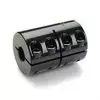
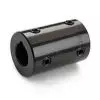
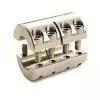
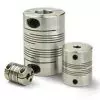
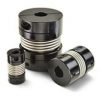

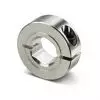
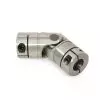
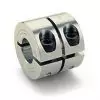 Short Rigid Couplings
Short Rigid Couplings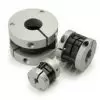 Controlflex Couplings
Controlflex Couplings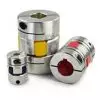 Jaw Couplings
Jaw Couplings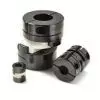 Oldham Couplings
Oldham Couplings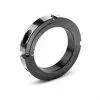 Bearing Locknuts – TCN
Bearing Locknuts – TCN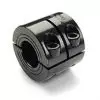 Double Wide Shaft Collars
Double Wide Shaft Collars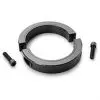 Heavy Duty Shaft Collars
Heavy Duty Shaft Collars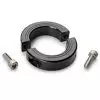 International Series Shaft Collars
International Series Shaft Collars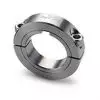 Keyed Shaft Collars
Keyed Shaft Collars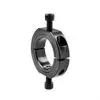 Mountable Shaft Collars
Mountable Shaft Collars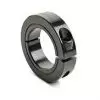 One-Piece Shaft Collars
One-Piece Shaft Collars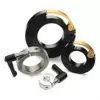 Quick Clamping Shaft Collars
Quick Clamping Shaft Collars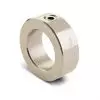 Set Screw Shaft Collars
Set Screw Shaft Collars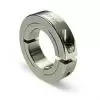 Thin Line Shaft Collars
Thin Line Shaft Collars Threaded Shaft Collars – Pacific International Bearing Products
Threaded Shaft Collars – Pacific International Bearing Products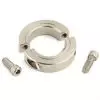 Two-Piece Shaft Collars
Two-Piece Shaft Collars Friction Bearing Universal Joints
Friction Bearing Universal Joints Needle Bearing Universal Joints
Needle Bearing Universal Joints